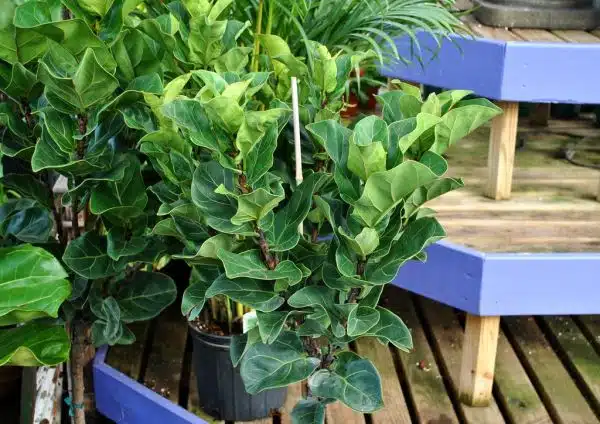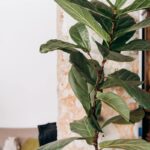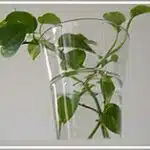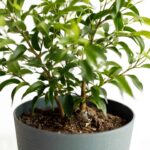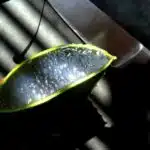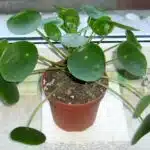Fiddle leaf figs have become one of the most popular indoor plants in recent years due to their large, glossy leaves and statement-making presence. However, as with any plant, they can sometimes be difficult to propagate. Fortunately, there are several methods for propagating fiddle leaf figs that are simple, effective, and accessible for any home gardener.
In this article, we will explore three different ways to propagate fiddle leaf figs: by stem cuttings, air layering, and division. Each method has its own unique advantages and challenges, and we will provide detailed instructions for each process so that you can choose the best method for your specific needs. By following our expert advice and tips on caring for your new plants post-propagation, you will be well on your way to growing a thriving collection of fiddle leaf figs to enjoy in your home or share with others.
Understanding Fiddle Leaf Fig Propagation
Fiddle leaf figs are a popular houseplant due to their aesthetic value and health benefits. They can be propagated in three ways: stem cuttings, air layering, and division. Each method has its advantages and disadvantages, so it is important to choose the right one based on personal preference.
Stem cuttings involve taking a piece of stem from the parent plant and planting it in soil or water until it grows roots. This method is quick and easy, but success rates vary depending on growth factors such as humidity, temperature, and light. It is best to take cuttings during the plant’s active growth period for optimal results.
Air layering involves creating a new root system on an existing branch while still attached to the parent plant. This method requires more patience and skill than stem cuttings but has a higher success rate due to the branch remaining attached to the parent plant for nutrients. Growth factors such as moisture levels must be carefully monitored during this process.
Propagating fiddle leaf figs can be a rewarding experience for both novice and experienced gardeners. The benefits of propagating include having multiple plants for decoration or sharing with others, saving money by not having to purchase new plants, and allowing for experimentation with different propagating techniques. In the next section, we will explore these benefits in more detail.
Benefits Of Propagating Fiddle Leaf Figs
Propagating fiddle leaf figs is a great way to expand your collection without spending a lot of money. Additionally, propagating your fiddle leaf fig plant can help keep it healthy and strong. When you propagate a fiddle leaf fig, you are essentially creating a new plant from an existing one. This process allows you to create multiple plants from a single parent plant, which can be beneficial for those who love having greenery in their homes.
One of the main benefits of propagating fiddle leaf figs is that it can help keep your original plant healthy. When you remove cuttings from your original plant, it stimulates new growth which can help keep the plant looking full and lush. Additionally, propagating your fiddle leaf figs allows you to experiment with different propagation techniques to find the one that works best for you.
Tips & Tricks for Propagating Fiddle Leaf Figs
There are several tips and tricks that can make propagating fiddle leaf figs easier and more successful. First, it’s important to make sure that you use sharp, clean tools when taking cuttings from your parent plant. This will help prevent damage to the original plant and ensure that your cuttings have the best chance of rooting successfully.
Secondly, it’s important to pay attention to the environment in which you are propagating your fiddle leaf figs. Make sure that they are getting enough light and water, but also make sure not to overwater them as this can cause root rot. By following these tips and tricks, you’ll be able to successfully propagate your fiddle leaf fig plants and enjoy all the benefits they have to offer.
Transition: Now that we’ve discussed some of the benefits and tips for propagating fiddle leaf figs, let’s move on to choosing the right time to propagate these beautiful plants.
Choosing The Right Time To Propagate
After understanding the benefits of propagating fiddle leaf figs, it is important to choose the right time to propagate. The best seasons for propagation are during the spring and summer months when temperatures are warmer, and there is an abundance of sunlight. During these seasons, fiddle leaf fig plants have a higher chance of producing new growth and roots.
However, it is also important to look out for signs of readiness before propagating your fiddle leaf fig. These signs include healthy leaves with no brown spots or discoloration, strong stems that can support new growth, and an overall healthy plant appearance. Propagating a plant that is not yet ready can lead to unsuccessful propagation attempts or even harm the original plant.
Once you have determined that your fiddle leaf fig is ready for propagation during the spring or summer months, it is time to prepare your tools and materials. Clean pruning shears or a sharp knife will be needed to take cuttings from the parent plant. Additionally, rooting hormone powder can aid in successful root development for your new cuttings. By properly preparing your tools and materials, you set yourself up for success in propagating your fiddle leaf fig.
Preparing Your Tools And Materials
Gathering materials and setting up your workspace are crucial steps to ensure successful propagation of your fiddle leaf fig. Before starting, make sure you have all the necessary tools and materials. You will need a clean, sharp pair of pruning shears, a rooting hormone powder, a container filled with potting mix, a clear plastic bag or plastic wrap, a spray bottle filled with water, and some labels.
Once you have gathered all the necessary tools and materials for propagation, it is time to set up your workspace. Choose a location that is well-lit but not in direct sunlight. A temperature of around 70-75°F is ideal for rooting cuttings. Make sure your work surface is clean and free from any debris or clutter. Sanitize your pruning shears by wiping them down with rubbing alcohol or dipping them in boiling water for several seconds.
Having the right tools and materials and ensuring that your workspace is properly set up can help increase the success rate of propagating fiddle leaf figs. In the next section, we will discuss one method of propagation: stem cuttings. This method involves taking cuttings from the parent plant’s stem and rooting them in soil until they develop their own roots.
Method 1: Stem Cuttings
Having prepared your tools and materials, let’s dive into the first method of propagating a fiddle leaf fig: stem cuttings. Did you know that according to recent studies, stem cuttings have an average propagation success rate of 80% for fiddle leaf figs? That means that four out of every five attempts will result in a new plant!
To begin, start with pruning techniques that are appropriate for the size and health of your plant. Be sure to use sharp, sterile pruning shears and make clean cuts at an angle just above a node or leaf. Once you have your cutting, remove any leaves from the bottom 2-3 inches and dip the end in rooting hormone powder.
Next, plant the cutting in moistened potting mix and cover it with a clear plastic bag to create a humid environment for rooting. Place the container in indirect light and keep the soil consistently moist. With proper care and patience, you should see new growth within a few weeks!
Method 2: Air Layering
Air layering is a propagation technique that involves creating roots on a stem while it is still attached to the mother plant. This method is an excellent way of propagating fiddle leaf figs as it allows you to create a new plant without harming the parent plant. Air layering benefits include quicker rooting and higher success rates compared to other propagation methods.
To air layer your fiddle leaf fig, start by selecting a healthy branch with several leaves, and make a small cut around the stem, about one-third of the way through the bark. Then, apply rooting hormone powder to the exposed section and wrap it with moist sphagnum moss. Cover this with plastic wrap and secure both ends with string or tape. The goal is to keep the moss moist while allowing light in for photosynthesis.
Propagation success tips for air layering include checking regularly that the moss remains damp and ensuring there are no air pockets between the moss and plastic wrap. After four to six weeks, check if roots have formed by gently tugging on the branch. If there is resistance, then roots have developed, and you can remove the branch from the parent plant carefully. Pot up your new fiddle leaf fig in well-draining soil, water thoroughly, and keep it out of direct sunlight until it has acclimated.
With air layering being such an effective propagation method for fiddle leaf figs, it’s worth considering trying this technique when looking to propagate your plants. However, if this method doesn’t appeal or isn’t suitable for your situation, don’t worry as there are alternative methods available such as division which we will discuss next without delay.
Method 3: Division
Propagation by division is a popular method of increasing fiddle leaf figs, as it can yield large numbers of plants in a relatively short amount of time. It is important to ensure the division is done correctly, so that the resulting plants have enough roots and soil to facilitate healthy growth. Once divided, cuttings should be potted in well-draining containers and watered thoroughly, while taking care to avoid overwatering. Additionally, appropriate pruning, fertilizing, sunlight, humidity, temperature, and timing should all be taken into consideration when propagating fiddle leaf figs.
Propagation
To propagate a fiddle leaf fig plant, there are various propagation techniques that you can use. One of these techniques is called division. It involves separating the mother plant into smaller parts and replanting them to promote new growth.
To start with the division method, you need to prepare your tools beforehand. You will need a sharp and clean knife or pruning shears, a potting mix, and some small pots. Carefully take out your fiddle leaf fig plant from its current pot and remove any excess soil around the roots. Then, gently separate the plant into smaller sections using your knife or pruning shears. Make sure each section has enough roots and foliage to support its own growth.
After dividing the plant into smaller parts, it’s time to replant them in their individual pots. Fill each pot with fresh potting mix and make a hole in the center for your newly separated plants. Place each section in its own hole and cover it with soil, making sure not to bury it too deep. Water each pot thoroughly and place them in an area where they can receive bright but indirect sunlight.
In conclusion, division is an effective way of propagating fiddle leaf fig plants as it promotes healthy plant growth by providing more space for new roots to form. By following these easy steps, you can successfully propagate your fiddle leaf fig plant through division and enjoy having multiple thriving plants in your home or garden!
Division
Propagating houseplants is a rewarding activity that can be done in various ways. One of the plant propagation techniques that can be used for fiddle leaf fig plants is division. This method involves separating the mother plant into smaller sections, which can then be replanted to promote new growth. Division is an effective way of propagating fiddle leaf fig plants as it provides more space for new roots to form, thereby promoting healthy plant growth.
To start with the division method, you need to prepare your tools beforehand. A sharp and clean knife or pruning shears, a potting mix, and some small pots are required. Carefully take out your fiddle leaf fig plant from its current pot and remove any excess soil around the roots. Then, gently separate the plant into smaller sections using your knife or pruning shears. Make sure each section has enough roots and foliage to support its own growth.
After dividing the plant into smaller parts, it’s time to replant them in their individual pots. Fill each pot with fresh potting mix and make a hole in the center for your newly separated plants. Place each section in its own hole and cover it with soil, making sure not to bury it too deep. Water each pot thoroughly and place them in an area where they can receive bright but indirect sunlight. By following these easy steps, you can successfully propagate your fiddle leaf fig plant through division and enjoy having multiple thriving plants in your home or garden!
Step-By-Step Guide To Stem Cutting Propagation
When it comes to propagating fiddle leaf fig, there are several propagation techniques that one can try. While stem cutting propagation is the most common and easiest method for beginners, it requires a bit of patience and skill. The process involves taking a cutting from the mother plant’s stem and growing it into a new plant.
Before getting started with stem cutting propagation, there are a few things you will need: pruning shears, rooting hormones, a pot with drainage holes, and well-draining soil mix. After preparing all the necessary materials, you can proceed with taking a 6-inch cutting from the mother plant’s stem using clean pruning shears. Remove all the leaves except for two or three at the top of the cutting.
Once you have your cutting ready, dip it in rooting hormone powder and shake off excess powder before planting it in well-draining soil mix. Place the pot in a bright but indirect light spot and keep the soil moist until roots start to grow. Propagating fiddle leaf fig through stem cuttings may take anywhere from 4-8 weeks, depending on various factors such as temperature, humidity levels, and care. With time and patience, you will soon have a new healthy fiddle leaf fig plant to enjoy!
Transition: Now that we’ve covered everything about stem cutting propagation let’s move on to another technique – air layering propagation. This method involves creating new roots on an existing branch while still attached to the mother plant.
Step-By-Step Guide To Air Layering Propagation
Air layering is a propagation technique that involves inducing roots to grow on a stem while it is still attached to its parent plant. This technique is particularly useful for fiddle leaf figs because it allows you to produce new plants without having to cut off the top of the parent plant. Air layering benefits include producing a larger and more mature plant in less time than other propagation methods, as well as ensuring that the new plant will be genetically identical to the parent.
To start air layering, select a healthy stem on your fiddle leaf fig that is at least 1 inch thick and has no damage or disease. Make two parallel cuts around the stem about 1 inch apart, then remove the bark and any underlying tissue between the cuts. Wrap moist sphagnum moss around this area, then wrap it tightly with plastic wrap. The air layer will form roots within several weeks, at which point you can cut it off from the parent plant and pot it up.
Overall, air layering is a simple yet effective way to propagate your fiddle leaf figs while maintaining their genetic integrity. By following this air layering technique, you can ensure that your new plants will thrive just as much as their parents did. In the next section, we will dive into a step-by-step guide on how to propagate fiddle leaf figs using division propagation.
Step-By-Step Guide To Division Propagation
Division propagation is a popular technique for propagating fiddle leaf figs. This method involves splitting the plant into two or more parts, each of which can be grown into a new plant. Division propagation is beneficial because it allows you to create multiple plants from one original plant, which can save time and money in the long run. Additionally, division propagation can help rejuvenate older fiddle leaf figs that have become overgrown or leggy.
To begin the division propagation process, start by selecting a healthy parent plant with multiple stems or branches. Carefully remove the parent plant from its pot and gently separate the stems at their base using pruning shears or a sharp knife. Each stem should have its own root system and leaves attached. Be sure to remove any dead or damaged foliage before potting up.
Once you have successfully divided your fiddle leaf fig, there are several steps you can take to ensure that your newly propagated plants thrive. These include providing adequate sunlight and water, fertilizing regularly with a balanced fertilizer, and monitoring for pests or diseases. With proper care and attention, your newly propagated fiddle leaf figs will grow into healthy and vibrant plants that will bring beauty to your space for years to come.
Caring For Your Newly Propagated Fiddle Leaf Figs
- Watering newly propagated fiddle leaf figs should be done regularly, allowing the topsoil to dry out slightly between waterings.
- Adequate sunlight is essential for successfully propagated fiddle leaf figs, as this will promote good growth and prevent the leaves from becoming soft.
- When propagating fiddle leaf figs, the soil should have adequate drainage and be rich in organic matter.
- The pH level of the soil should be maintained at 6.5 to 7.5 for best results.
- In order to provide an optimal environment for propagated fiddle leaf figs, the soil should be kept at a temperature between 65°F and 75°F.
- To ensure adequate air flow and drainage, the soil should be properly aerated before planting the fiddle leaf figs.
Watering
To ensure that your newly propagated fiddle leaf figs grow healthy and strong, proper watering is crucial. Misting is a great way to provide moisture to the leaves of your fiddle leaf fig. Not only does it help keep the leaves clean and free from dust, but it also increases humidity levels around the plant. This is particularly beneficial for indoor plants, as they can suffer from dry air in heated or air-conditioned environments. You can mist your fiddle leaf fig once or twice a week using a spray bottle filled with room temperature water.
In addition to misting, knowing how often to water your newly propagated fiddle leaf figs is vital. Overwatering can lead to root rot and other issues, while underwatering can cause the plant’s leaves to wilt and drop off. The frequency of watering depends on several factors such as the size of the plant, its location, and the type of potting mix used. Generally, you should wait until the top inch of soil feels dry before watering again. This may mean watering every 7-10 days during warmer months and less frequently during colder months.
In summary, proper watering techniques are essential for caring for your newly propagated fiddle leaf figs. Misting not only helps keep the leaves clean but also increases humidity levels around the plant. Knowing how often to water your plants will prevent issues like root rot or wilting leaves caused by over or underwatering. By following these tips and giving your plants adequate attention and care, you will be rewarded with healthy and beautiful fiddle leaf figs that will thrive in any environment!
Sunlight
As a plant propagation specialist, it is crucial to understand that caring for your newly propagated fiddle leaf figs involves several factors. One of which is providing adequate sunlight. Fiddle leaf figs thrive in bright, indirect light, and they require at least six hours of sunlight per day to grow healthy and strong. However, in some cases, low light conditions can prevent your plants from thriving. Fortunately, there are ways to overcome this issue using grow lights.
Using grow lights is an excellent way to supplement natural sunlight and ensure that your fiddle leaf figs receive the necessary light they need to thrive. Grow lights mimic the sun’s spectrum and provide intense light that promotes photosynthesis and growth. When using grow lights, it is essential to place them at the right distance from your plants and set them on a timer to ensure consistent lighting conditions.
Overall, providing adequate sunlight is vital for caring for your newly propagated fiddle leaf figs. If you struggle with low light conditions in your home or office space, using grow lights can be an effective solution. With proper lighting techniques and attention to other factors like watering and humidity levels, you can help your plants thrive and enjoy their beauty for years to come!
Soil
As a plant propagation specialist, understanding the importance of soil and potting mixes is crucial when caring for your newly propagated fiddle leaf figs. Choosing the right type of soil can make a significant difference in the growth and overall health of your plants. Fiddle leaf figs require well-draining soil with a pH level between 6.0 to 7.0.
When choosing a potting mix for your fiddle leaf figs, it’s essential to look for mixes that are specifically formulated for indoor plants. Avoid using garden soil as it may contain pests or diseases that can harm your plants. Instead, opt for commercially available potting mixes that are made with organic materials like peat moss, perlite, and vermiculite.
It’s also crucial to repot your fiddle leaf figs every one to two years to ensure they have enough space to grow and thrive. When repotting, choose a container that is one size larger than the current one and fill it with fresh potting mix. Water your plants thoroughly after repotting and place them in bright, indirect light to allow them to adjust to their new environment.
In conclusion, providing the right type of soil and potting mix is essential when caring for your newly propagated fiddle leaf figs. Choosing well-draining soil with a pH level between 6.0 to 7.0, using commercially available potting mixes made with organic materials like peat moss, perlite, and vermiculite, and regularly repotting every one to two years can help keep your plants healthy and thriving.
Common Problems And How To Solve Them
Propagation is an exciting way to expand your plant collection, but it can also be challenging. Many people make common propagation mistakes that prevent their plants from thriving. One common mistake is overwatering, which can cause root rot and kill the cutting before it has a chance to grow roots. It’s essential to let the soil dry out slightly before watering your propagated fiddle leaf fig. Another mistake is not providing enough light or warmth, both of which are crucial for successful propagation.
Another issue that many people face when propagating a fiddle leaf fig is failing to provide proper support for the cutting. If the cutting isn’t supported correctly, it can wilt or break off, making it impossible for roots to grow. Make sure you choose a container that’s small enough to keep the cutting in place while still allowing room for new growth. Additionally, use a rooting hormone and ensure that the soil remains moist but not soggy.
To troubleshoot propagation issues with your fiddle leaf fig, start by examining how you’re caring for the plant. Consider whether you’re giving it enough light and warmth and whether you’re overwatering or underwatering it. If you notice any signs of distress, such as wilting leaves or slow growth, adjust your care routine accordingly. Remember that patience is key when propagating any plant; it takes time for roots to develop and new growth to appear.
In conclusion, successful propagation requires careful attention to detail and patience. By avoiding common propagation mistakes and troubleshooting problems as they arise, you’ll be on your way to expanding your plant collection with healthy fiddle leaf figs in no time. Next up, we’ll explore some troubleshooting tips for successful propagation so that you can ensure your cuttings thrive and grow into beautiful plants.
Troubleshooting Tips For Successful Propagation
Did you know that only about 50% of fiddle leaf fig cuttings successfully propagate? While propagation success rates can vary depending on many factors, it’s important to understand common mistakes to avoid when propagating your fiddle leaf fig.
One common mistake is overwatering. It’s tempting to keep the soil moist in hopes that it will help the cutting grow, but too much water can cause the cutting to rot before it has a chance to root. Instead, allow the soil to dry out slightly between waterings and ensure proper drainage in your container.
Another mistake is not providing enough light. Fiddle leaf figs require bright, indirect light for successful propagation. If you don’t have a bright location available, consider using artificial grow lights or placing your cuttings near a window with southern or western exposure.
Propagation success stories are always exciting to hear! One way to increase your chances of success is by taking multiple cuttings at once and experimenting with different methods such as water propagation or using rooting hormone. Remember, patience is key when it comes to propagation – some cuttings may take several months to root and begin growing new leaves. By avoiding common mistakes and being persistent in your efforts, you too can have successful fiddle leaf fig propagation stories of your own.
As you master the art of propagating fiddle leaf figs, don’t keep all of your success stories to yourself! Sharing your fiddle leaf fig cuttings with others can be a rewarding experience and help spread the joy of indoor gardening. Whether you’re gifting cuttings or simply sharing tips with fellow plant enthusiasts, remember that growing plants is not just about personal satisfaction but also about serving others and making our world a greener place one plant at a time.
Sharing Your Fiddle Leaf Fig Cuttings With Others
Once you have successfully propagated your fiddle leaf fig, it is natural to want to share your newfound success with others. Sharing cuttings is a great way to spread the love of plant propagation and introduce others to the joys of growing their own fiddle leaf figs. However, it is important to follow proper propagation etiquette when sharing cuttings.
First, ensure that the cutting you are sharing is healthy and disease-free. It is also important to make sure that the recipient knows how to properly care for the cutting. Provide them with detailed instructions on how to pot and care for the cutting, as well as any specific growing conditions that are necessary for a fiddle leaf fig.
Secondly, it is important to ask permission before taking cuttings from someone else’s fiddle leaf fig. Not only does this show respect for their property, but it also ensures that you are not inadvertently spreading any diseases or pests between plants.
Propagation etiquette is crucial when sharing cuttings with others. By following these guidelines, we can ensure that we are promoting healthy growth and fostering a community of responsible plant propagators.
As we come to the end of this section on sharing your fiddle leaf fig cuttings with others, we hope that you have learned the importance of proper propagation etiquette. By sharing healthy and disease-free cuttings and asking permission before taking cuttings from others’ plants, we can foster a sense of community among plant enthusiasts. In the next section, we will explore the joy of growing your own collection of fiddle leaf figs and how it can bring happiness into your life.
Conclusion: The Joy Of Growing Your Own Fiddle Leaf Fig Collection
Sharing your fiddle leaf fig cuttings with others can be a rewarding experience, as it allows you to spread the joy of indoor gardening and share your passion for houseplants. However, there are also many benefits to growing your own collection of fiddle leaf figs. Not only can you enjoy the beauty and air-purifying benefits of these plants in your own home, but propagating them yourself can be a satisfying and fulfilling hobby.
One way to propagate fiddle leaf figs is through stem cuttings, which involves selecting a healthy stem with at least two leaves and rooting it in water or soil. Another method is air layering, which involves creating a wound on the stem and encouraging roots to form before separating it from the parent plant. A third option is division, which involves separating a mature plant into smaller sections and repotting them individually.
In addition to being able to grow your own collection of fiddle leaf figs, these plants can also be used for decorating purposes. Tips for decorating with houseplants include placing them in areas with natural light, choosing pots that complement the decor of the room, and varying the sizes and shapes of plants for visual interest. By incorporating these tips into your interior design plans and growing your own fiddle leaf figs, you can create a beautiful and healthy living space that brings joy to both yourself and others.
Conclusion
Fiddle leaf fig propagation is a wonderful way to expand your plant collection and share the beauty of this popular species with others. By understanding the different methods of propagation and preparing properly, you can successfully grow new fiddle leaf fig plants. Stem cuttings are one effective method that can be used to propagate fiddle leaf figs, but it is important to be aware of common problems such as stem rot or low humidity that can affect success rates.
As a plant propagation specialist, I encourage you to experiment with different methods and techniques for propagating your fiddle leaf figs. With patience and attention to detail, you can enjoy the satisfaction of growing your own thriving collection. As a metaphor for this process, think of propagating fiddle leaf figs as nurturing a garden – by tending to each individual cutting with care and attention, you can cultivate a lush and vibrant display of these beautiful plants in your home or garden.
Image Credits
- “Fiddle-leaf fig (Ficus lyrata compacta)” by Futureman1 (featured)

